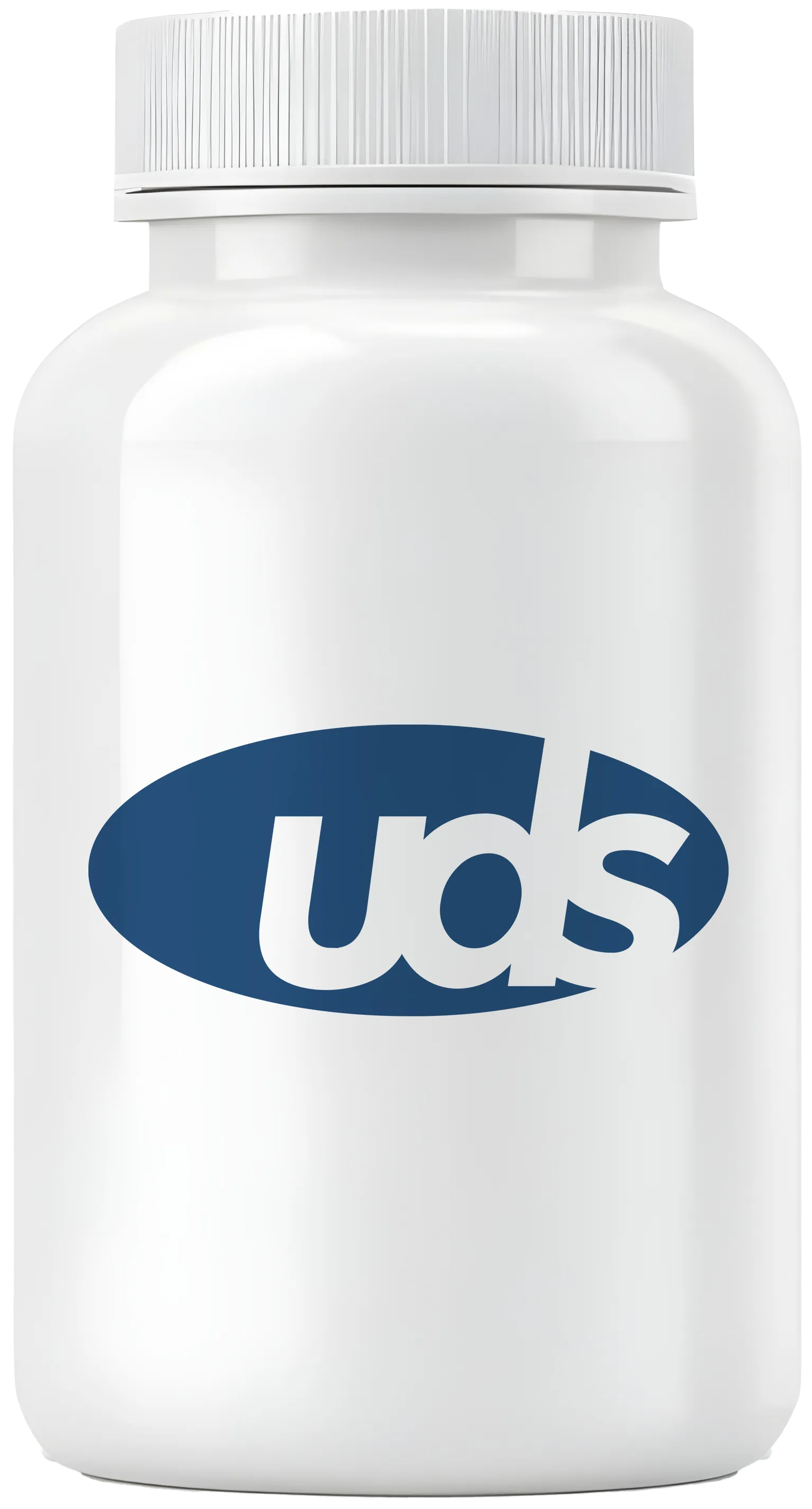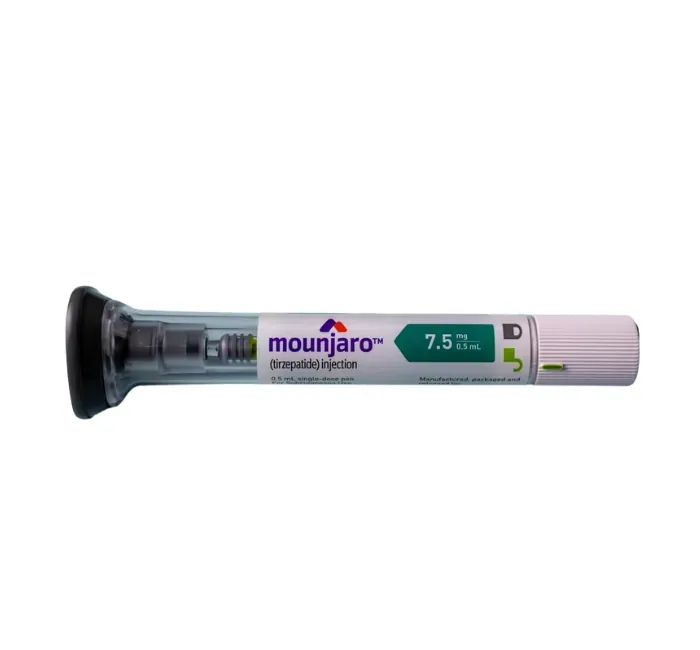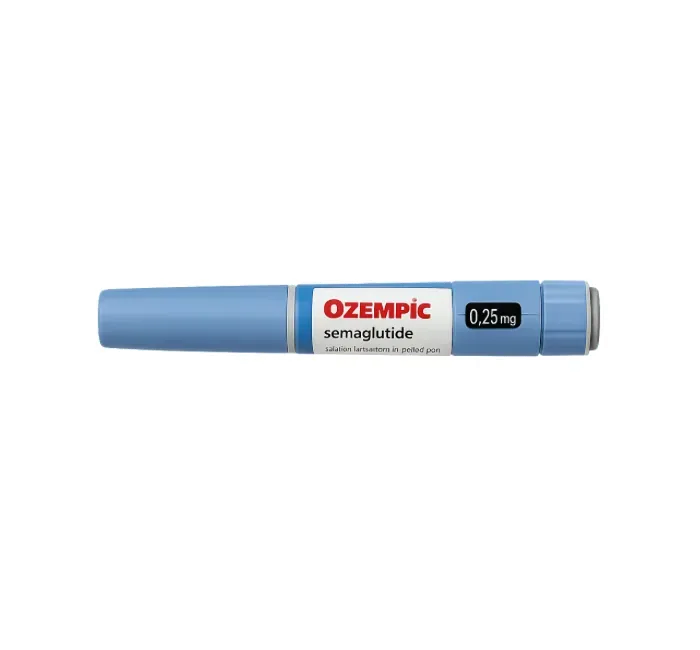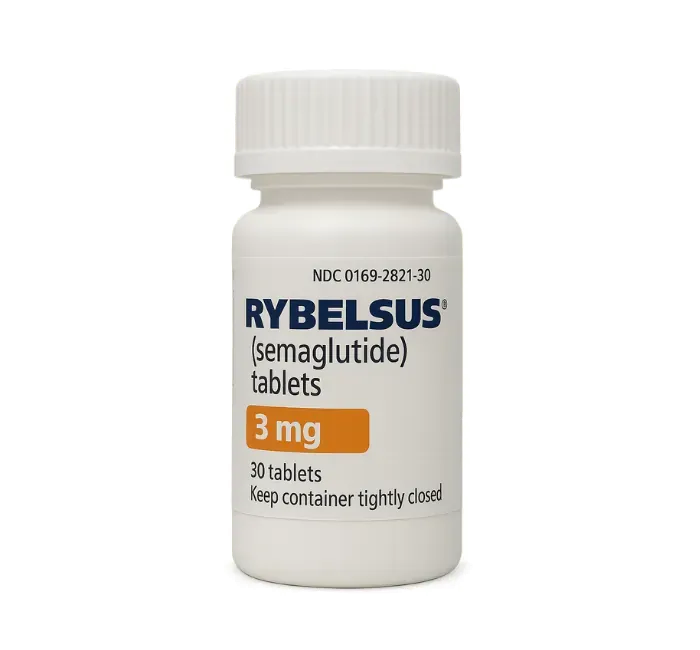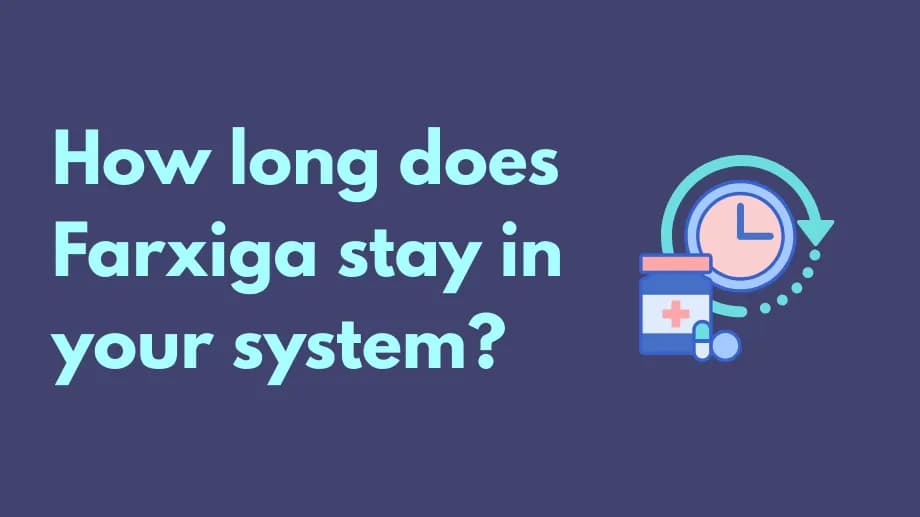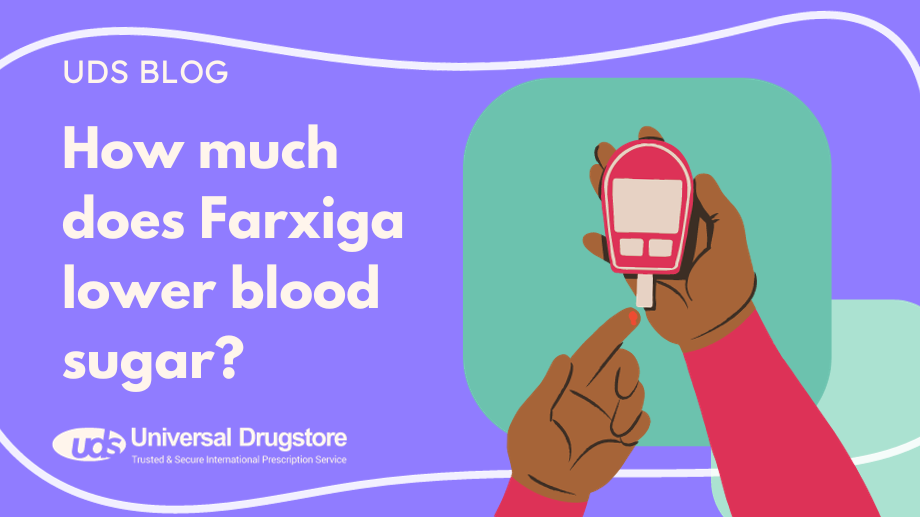Farxiga vs. Jardiance: Which is better for weight loss?
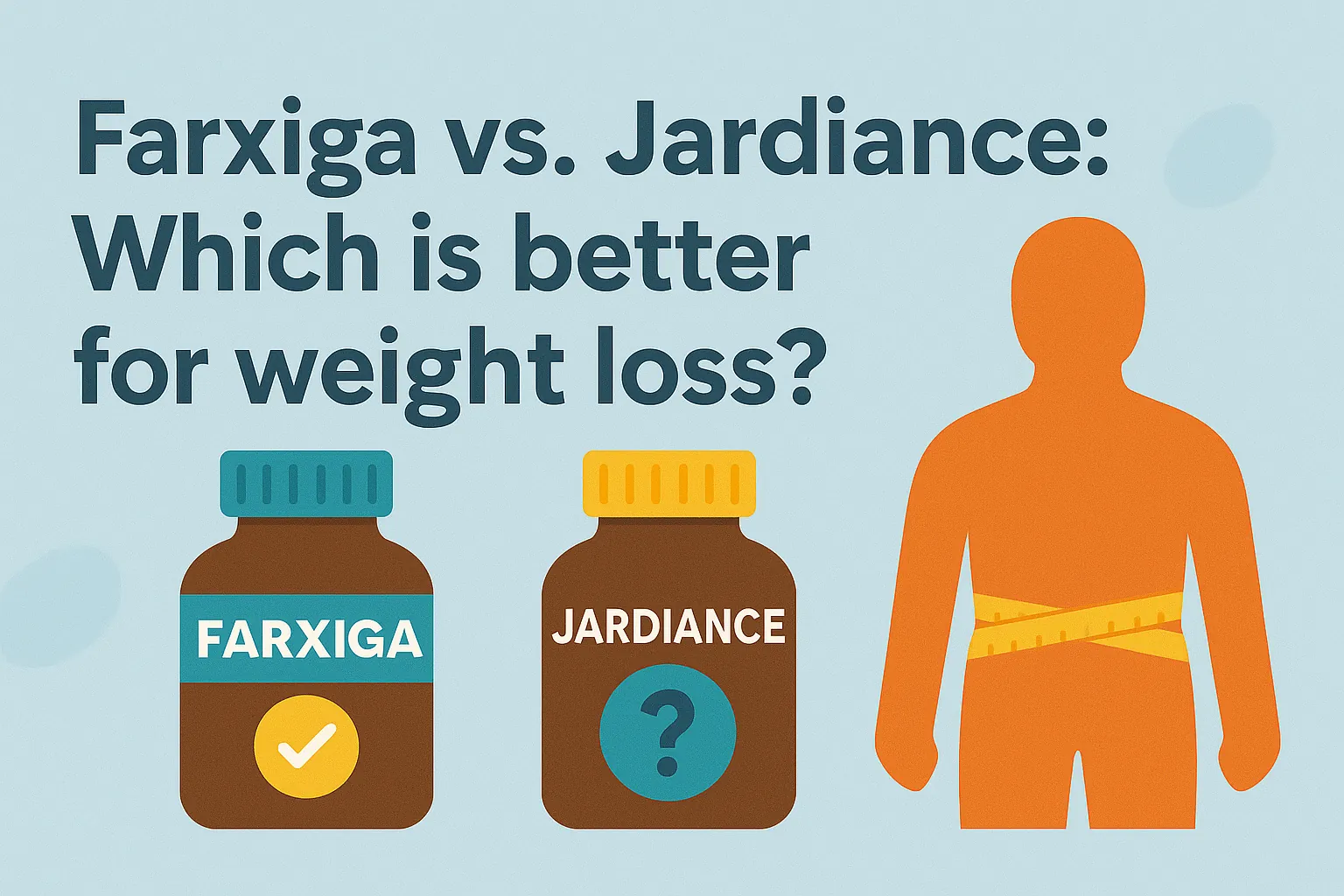
If you have type 2 diabetes (T2DM), your healthcare provider may prescribe Farxiga (dapagliflozin) or Jardiance (empagliflozin) for you. Both brand-name medications are recommended as treatment options to lower blood sugar levels in adults with type 2 diabetes mellitus (T2DM) according to guidelines from the American Diabetes Association. They can also reduce the risk of death and cardiovascular complications in diabetes patients with certain medical conditions such as heart failure and chronic kidney disease (CKD).
Farxiga and Jardiance belong to a class of drugs called sodium-glucose cotransporter-2 or SGLT-2 inhibitors. They are both oral tablets taken once a day. They are also both brand-name prescription drugs that have no generic version available.
While neither is FDA-approved as a weight loss medication, you may lose weight as a side effect. But how much weight can you lose with each medication? Keep reading as we talk about this and compare their uses, side effects, and other important information.
How much weight can you lose with Farxiga or Jardiance?
Both diabetes medications have been shown to be effective in lowering blood glucose levels in patients with type 2 diabetes. During clinical studies, people taking Farxiga and Jardiance also lost weight.
In studies with Farxiga, the most significant fat loss starts around 6 weeks after starting treatment and can continue for about 6 months. After 6 months, people lost almost 5 lbs after 24 weeks (about 6 months) when combined with metformin.
In most studies with Jardiance, people had an average weight loss of about 4 to 6 pounds after 6 months of taking it.
Keep in mind that these numbers are averages, so some people might lose more or less weight with these diabetes drugs. It is also possible that you will not have any weight change. Changes in your body weight can be influenced by many factors, including diet, exercise, and other medications.
Farxiga vs. Jardiance: Active Ingredients and Uses
The main difference between Farxiga and Jardiance is their active ingredients. The active ingredient in Farxiga is dapagliflozin while Jardiance contains empagliflozin.
However, they are both SGLT-2 inhibitors and work similarly, targeting a specific part of your kidneys responsible for sugar reabsorption. SGLT-2 inhibitors block SGLT-2 proteins to reduce sugar from being reabsorbed into your body. As a result, more glucose is released into the urine, which helps manage your blood sugar levels.
They are both FDA-approved along with diet and exercise to help:
- Reduce the risk of hospitalization and death from heart failure in adults with heart failure.
- Reduce the risk of worsening kidney function, end-stage kidney disease, heart-related death (heart attack and stroke), and hospitalization in adults with chronic kidney disease (CKD).
- Control blood sugar levels in adults with type 2 diabetes.
Jardiance can also help reduce the risk of heart-related death in adults with T2DM and known heart disease. Farxiga is approved to reduce the risk of hospitalization for heart failure in adults with T2DM and known heart disease or multiple cardiovascular risk factors (high blood pressure, high cholesterol, or obesity). Neither of these medications is approved to treat type 1 diabetes or diabetic ketoacidosis.
Farxiga vs. Jardiance: Side Effects
Since they are both SGLT-2 inhibitors, they have some of the same common side effects. Some of these include:
Shop Medications
- Nausea
- Increased urination
- Urinary tract infections (UTIs)
- Upper respiratory infections
- Genital yeast infections
They both also share some rare, more serious side effects, including:
- Allergic reactions (hives, swelling of your face, tongue, and throat, and trouble breathing)
- Low blood sugar (hypoglycemia)
- Dehydration and low blood pressure (if you are over 65 years of age, have kidney problems, or are taking diuretics, you’re more likely to have this problem)
- Severe UTIs
Farxiga can also rarely cause necrotizing fasciitis, a severe skin infection in your genital area. This infection often requires hospitalization, surgical intervention, and can even lead to death.
Disclaimer: This is not the entire list of possible side effects. Contact your healthcare professional for medical advice about any possible adverse effects you experience while taking Farxiga or Jardiance. You can report your adverse effects to the FDA at 1-800-FDA-1088 or www.fda.gov/medwatch.
Farxiga vs. Jardiance: Drug Interactions
Both medications can interact with similar classes of drugs, including:
- Antibiotics such as gatifloxacin
- Beta-blockers such as atenolol, propranolol, bisoprolol, and sotalol
- Calcium channel blockers such as felodipine, amlodipine, and nifedipine
- Corticosteroids such as betamethasone and dexamethasone
- Diuretics such as furosemide
- ACE inhibitors such as captopril, enalapril, and ramipril
These are not all of the possible drug interactions with Farxiga or Jardiance. Be sure to let your healthcare provider know about any other prescription drugs, over-the-counter medications, vitamins, and supplements you are taking before starting one of these medications.
Farxiga vs. Jardiance: Warnings and Precautions
Farxiga and Jardiance work similarly and the same warnings apply to both of these medications. Before starting using Farxiga or Jardiance, be sure to let them know any medical conditions you have, especially:
- Any allergic reaction to either medication or any of its inactive ingredients
- If you are pregnant or plan on becoming pregnant
- If you are breastfeeding or plan on breastfeeding
- If you have a history of urinary tract infections or genital yeast infections
- If you have kidney problems
- If you have high cholesterol levels
- If you take diuretics or insulin
Can you switch between Farxiga and Jardiance?
Yes, you can switch between Farxiga and Jardiance. However, because they work similarly and have many of the same side effects, you may not notice any difference between them. You should not switch medications or stop your current treatment unless your healthcare provider tells you to. Talk with them if you have questions about switching your medication or to discuss which medication is best for you.
Sources
- Farxiga (dapagliflozin) tablets, for oral use. [Package Insert] (2022). AstraZeneca. Accessed Oct. 6, 2024.
- Farxiga FAQs (2024) AstraZeneca. Accessed Oct. 6, 2024.
- Jardiance (empagliflozin tablets), for oral use. [Package Insert]. Boehringer Ingelheim Pharmaceuticals, Inc (2023). Accessed Oct. 6, 2024.
- Iqbal N, Ambery P, Logue J, et al. Perspectives in weight control in diabetes – SGLT2 inhibitors and GLP-1–glucagon dual agonism. Diabetes Res Clin Pract. 2023;199:110669. doi:10.1016/j.diabres.2023.110669. Accessed Oct. 6, 2024.
- American Diabetes Association. (2021). 9. Pharmacologic approaches to glycemic treatment: Standards of medical care in diabetes – 2021. Accessed Oct. 6, 2024.
